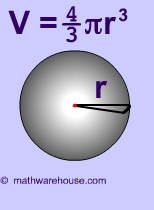Icing Sugar
New Bee
I can only assume that a cast swarm so big that it fills 2 Langstroth boxes must have come from a parent colony that was housed in 3 or 4 Langstroth boxes. How can that possibly be, especially with such a short forage season in Finland? The only thing I can think of is as follows:My cast swarm are often 5 kg. Such fills 2 langstroth boxes.
Reason is that prime swarm cannot leave because queen wing is cut.
They must wait a new queen, which can fly. That queen ought to be a leader of cast swarm, but now it has prime bees too.
Somewhere near your bait hives I suspect there is a beekeeper who artificially builds their colonies up to "monster size", probably by adding frames of brood (ideally sealed) along with their attached non-flying nurse bees to their preferred production colonies. They probably build these so-called "colonies" up until they fill about 4 Langstroth boxes and then take them out to suitable pastures. Two or three weeks later these hives will be utterly bursting with enough workers to fill 6+ Langstroth boxes and there will be an unimaginable surplus of redundant nurse bees. These totally unnatural hive conditions will be perfect for inducing a swarm. However the beekeeper concerned will have the devil's own job finding every swarm cell in a stack of 4 Langstroth boxes and they won't want to interfere with the hive during a flow anyway (they might even hope that the flow is sufficient to inhibit any swarm inpulse, and those 4 boxes will be positioned underneath a skyscraper of supers into the bargain). Their queens (probably brought-in hybrids from a specialist breeder) are clipped, which might have bought them a few extra days to sort things out but the beekeeper probably lives about 100km from their preferred pastures and so doesn't get to check their hives as often as they might.
What a great shame for such a beekeeper when 60+% their workers swarm from such a hive during the flow. They were probably hoping for a yield of about 150kg from that one hive alone. Presumably all hope of that diappeared with the cast swarm, unless those young bees were never going to be old enough to become foragers during flow season anyway. (If the latter case is true then the artificial creation of such monster colonies was misguided from the outset).
I think there might be a beekeeper who lives near you who could benefit from your mentorship. What with your 50 years experience, you should have the knowledge and skills to really bring them on well.
Sent from my LG-H340n using Tapatalk




















































